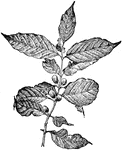Clipart tagged: ‘Arabica’

Coffea Arabica
Coffea arabica is a species of coffee indigenous to Ethiopia and Yemen. It is also known as the "coffee…

The Lentil Plant
This illustration shows a lentil plant. Lentils are the round, flat seeds of a small leguminous plant…